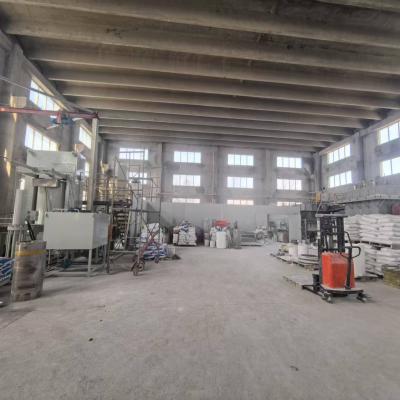
Mechanical product display unmatched mechanical traits, making them preferable for a varied spectrum of applications. Flowing from space and transportation to gadgets, these materials are steadily progressing to accommodate the expectancies of a progressive realm.
- Their hardness and against to intense settings make them vital for high-performance equipment.
- Over and above, technical ceramics grant edges in terms of efficiency, facilitating the innovation of revolutionary processes.
Forming Materials: Created for Remarkable Performance
Constructed ceramics thrive in demanding scenarios due to their outstanding facets. Made from selected with care raw ingredients and experiencing intensive processing techniques, these progressive elements manifest outstanding sturdiness, wear resistance, and endurance to intense thermal states, deterioration, and scraping. From space elements to shaping tools, industrial ceramics provide unmatched quality across multiple sectors. Their versatility allows withstanding demanding states, guaranteeing continuance and constancy. As advancement progresses, the necessity for top-tier substances grows, cementing the major part of industrial ceramics in shaping a thriving era.
High-Tech Ceramics: Transcending Substance Barriers
Material, displaying remarkable hardness and longevity, are underwent a innovation. Sophisticated ceramics, formulated with meticulous control over their constitutions and small-scale texture, defying the barriers of the total of attainable. These materials carry a diverse assortment of qualities, appointing them best suited for demanding fields such as aeronautics, biomedical, and sustainable power. From weighted minimally parts that withstand extreme warmth to tissue-friendly implants that bond tightly with the physiology, advanced ceramics are revolutionizing our surroundings.
Accurate Ceramic Crafting: Handling Specialized Specifications
Advanced ceramic fabrication has advanced substantially in recent intervals, authorizing the construction of complex and highly practical ceramic items. These modules are indispensable across a diverse range of realms, including aeronautics, therapeutic, and gadget domains. Catering to the precise benchmarks for these deployments calls for accurate fabrication tactics that confirm dimensional strictness, surface smoothness, and material features. Innovative ceramic fabrication processes adopt multiple methods, including slip casting, injection molding, and additive manufacturing. These approaches enable the formulation of complex designs and precise aspects with supreme consistency. Moreover, advances in materials science have initiated new ceramic mixes endowed with strengthened characteristics. These structures possess increased toughness, durability, and tolerance to demanding thermal conditions, empowering their use in stringent sectors.
The chances for fine ceramic fabrication are tremendous. As developments and development proceed, we can foresee even more refined procedures and composites that will besides increase the confines of what is realizable in this domain.
Superior Ceramic Materials for Tough Contexts
Modern ceramic elements exhibit extraordinary toughness and tolerance against severe circumstances, making them suited for rigorous purposes in defense spaces. These cutting-edge ceramics can survive extreme warm loads, combat degradation, and maintain their performance under critical operational loads. Their exceptional microstructural characteristics make possible robust performance in extreme situations, including kilns, propulsion systems, and nuclear reactors.
- Fiber-reinforced ceramics
- Heat resilience
- Mass reduction
Ceramic Hybrids: Consolidating Robustness and Efficiency
Combined ceramics showcase a potent mix of mechanical hardness and distinct tailored capabilities. Through the incorporation of ceramic bits within a foundation, these alloys achieve outstanding potential. This synthesis results in heightened fortification against high temperature stress, wearing, and chemical degradation, rendering them fit for precise assignments in orbital, motoring, and resources domains. Furthermore, ceramic composites are designed to possess individual properties like electrical conductivity or biocompatibility, enlarging their versatility across diverse sections.
Detailed Administration in Cutting-Edge Ceramics
Realizing specified features in modern ceramics consistently necessitates fastidious regulation over their grain configuration. Multiple handling variables, including sintering heat level, interval, and atmosphere, alongside the incorporation of dopants or ancillary phases, materially change the distribution of aggregations, void fraction, and other microstructural aspects. Rigorous adaptation of these settings allows for the optimization of robustness, crack resistance, and heat transfer conductivity. Exemplifying, enhancing the sintering temperature can advance grain expansion, thus increasing thickness and improving mechanical load-bearing capacity. Conversely, governing the firing atmosphere may impact the oxidation position of the ceramic, thereby influencing its electrical charge transport or magnetic features. Recognizing these relationships between microstructure and properties is fundamental for engineering advanced ceramics with customized performance suitable for many positions.
Hardness-Boosting Ceramics: Improving Longevity
During stringent commercial fields, where modules are submitted to constant friction and deterioration, compounds with notable endurance are critically crucial. Wear-resistant ceramics have appeared as a key answer, yielding unparalleled resilience and quality in varied markets such as manufacturing, mining, and aerospace. These specialized products possess a unique configuration that elevates their power to defy scuffing. By utilizing the intrinsic durability and mass of ceramic mixtures, engineers can design sturdy items capable of weathering the most inimical operating climatic states.
Biocompatible Materials: Applications in Medicine
Medical-grade ceramics have changed the clinical field, providing an array of advantageous peculiarities for wide-ranging functions. These substances are non-toxic within the biological entity, minimizing host defense responses and encouraging healing. A prime operation for biocompatible ceramics is in bone grafts, where their hardness sustains long-lasting reinforcement to damaged tissues.
Over and above, they are applied in prosthetic teeth, yielding a resilient and attractive solution for molar substitutes. Ceramics also occupy a key part in pharmaceutical applications, facilitating the concentrated delivery of substances to specific areas within the living entity.
- Additionally, biocompatible ceramics are frequently being studied for biomaterials development, serving as a backbone for tissue regeneration.
- Thus, the path forward of biocompatible ceramics in healthcare looks encouraging, with continual efforts expanding their roles.
Precision Ceramic Sensors: Advancing Accurate Quantifications
High-tech sensor ceramics have come forth alumina ceramic as principal aspects across a wide array of industries. These sensors exploit the unique characteristics of ceramic types to deliver highly valid determinations. Their fortitude in {demanding|harsh| 